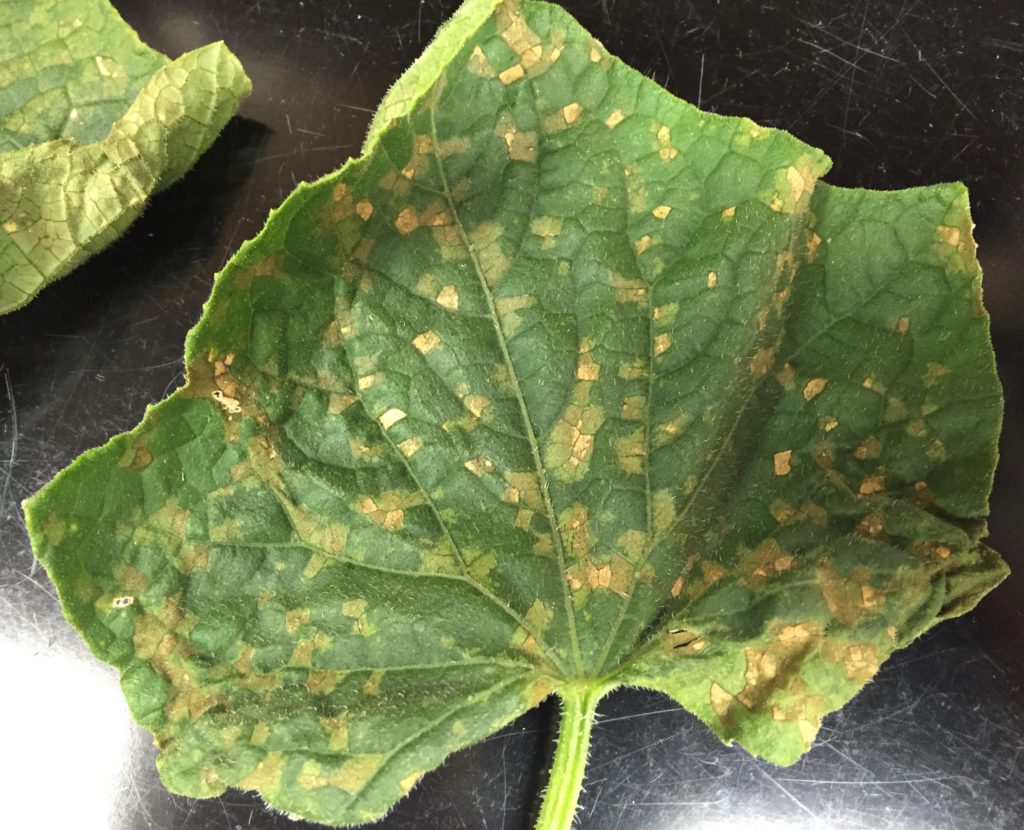Organic Plant Breeding Yields Superior Varieties for Cucurbit Growers
go.ncsu.edu/readext?595059
en Español / em Português
El inglés es el idioma de control de esta página. En la medida en que haya algún conflicto entre la traducción al inglés y la traducción, el inglés prevalece.
Al hacer clic en el enlace de traducción se activa un servicio de traducción gratuito para convertir la página al español. Al igual que con cualquier traducción por Internet, la conversión no es sensible al contexto y puede que no traduzca el texto en su significado original. NC State Extension no garantiza la exactitud del texto traducido. Por favor, tenga en cuenta que algunas aplicaciones y/o servicios pueden no funcionar como se espera cuando se traducen.
Português
Inglês é o idioma de controle desta página. Na medida que haja algum conflito entre o texto original em Inglês e a tradução, o Inglês prevalece.
Ao clicar no link de tradução, um serviço gratuito de tradução será ativado para converter a página para o Português. Como em qualquer tradução pela internet, a conversão não é sensivel ao contexto e pode não ocorrer a tradução para o significado orginal. O serviço de Extensão da Carolina do Norte (NC State Extension) não garante a exatidão do texto traduzido. Por favor, observe que algumas funções ou serviços podem não funcionar como esperado após a tradução.
English
English is the controlling language of this page. To the extent there is any conflict between the English text and the translation, English controls.
Clicking on the translation link activates a free translation service to convert the page to Spanish. As with any Internet translation, the conversion is not context-sensitive and may not translate the text to its original meaning. NC State Extension does not guarantee the accuracy of the translated text. Please note that some applications and/or services may not function as expected when translated.
Collapse ▲Kiki Hubbard | 3/25/2019 | Organic Seed Alliance via Carolina Farm Stewardship Alliance
Farmers looking for disease-resistant cucurbits now have more choices thanks to the release of new cucumber and melon varieties by Cornell University—the result of years of research by public plant breeders and organic farmers. These varieties are a result of participatory breeding efforts focused on cucurbits most in need of improvement and exhibit exceptional resistance to evolving diseases as well as production and culinary characteristics important to organic farmers.
“Our approach to plant breeding involves a close collaboration with farmers, regional seed companies, and other researchers to test varieties in the environment of their intended use,” says Michael Mazourek with the Department of Plant Breeding and Genetics at Cornell University. “In the case of these cucurbit varieties, they were all bred with the needs of organic farmers in mind.”
Pathogens emerge and evolve quickly, and breeders struggle to stay ahead with new resistant varieties. Downy mildew and bacterial wilt are two devastating diseases that too often wipe out entire cucurbit crops. While conventional cucumber growers rely on synthetic chemical inputs—such as neonicotinoid seed treatments and sprays—organic growers don’t have (or want) that option and instead rely even more on protecting crops from the inside out: through plant genetics resistant to diseases.

“The beauty of our success is that these high-yielding, disease-resistant varieties are as beneficial to conventional growers as they are to organic,” Mazourek adds.
The varieties now available were developed with support from the National Institute of Food and Agriculture’s Organic Research and Extension Initiative (OREI), housed within the US Department of Agriculture (USDA). Partnering with Cornell University on the Eastern Sustainable Organic Cucurbit Research Project (ESOcuc) were Auburn University, North Carolina State University, and Organic Seed Alliance. Farmers, extension agents, and seed companies along the East Coast also played an important role.
The four objectives of ESOcuc were to:
- Evaluate the most popular cucurbit varieties for yield and pest and disease resistance.
- Breed improved varieties.
- Examine on-farm management strategies to overcome environmental and economic challenges.
- Make data available to farmers through field days, webinars, and other resources.


